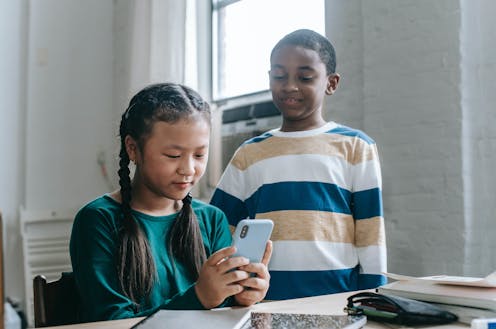Young Australians increasingly get news from social media, but many don't understand algorithms
- Written by Tanya Notley, Associate Professor in Digital Media, Western Sydney University

Adults might assume young people are not engaged in current affairs.
But our survey[1] reveals most Australian children and teenagers have a significant interest in the news. There has, however, been a drop in interest from our 2020 survey[2], done at the start of COVID.
Our research also shows children and teenagers increasingly get news from social media but many do not understand how algorithms select the news[3] they see.
This suggests there needs to be more focus on teaching media literacy in schools.
Read more: Less than half of Australian adults know how to identify misinformation online[4]
Our study
In June, we asked 1,064 children and teens (aged eight to 16) from around Australia how they access and consume news media. This repeats earlier surveys we did in 2017[5] and 2020[6].
When asked about the news they accessed yesterday, most young people (83%) said they had received it from at least one source. One third (33%) used three or more sources.
There has been a drop in young people’s news engagement since the 2020 survey, which was conducted at the end of the Black Summer bushfires and the start of COVID. In 2020, 88% of young people had consumed news from at least one source and they were getting news more frequently from family, friends, teachers and television.
This decline mirrors a 2023 survey[7] on Australian adults, which suggests people increase their news consumption during major national events.















